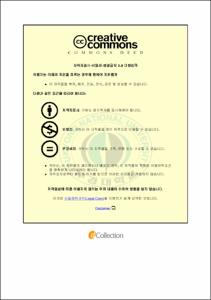여성유권자의 투표참여와 전략투표행위에 미치는 매체이용 효과의 남녀 유권자 차이
- Alternative Title
- Participation of Women Voters and the Voting Difference between Men and Women by the Media Effect Influencing : Focusing on the Ulsan Campus Students of Korea National Open University during the Mayor Election of 6.2 Ulsan City
- Abstract
- This study was to aim at the actual analysis of the difference between men and women voters with women's voting participation with targeting the Ulsan campus students of Korea National Open University when the media is used in the election.
Total of 380 questionnaires were distributed from May 20 thru May 20, 2010, six days before the 5th national simultaneous local elections and 329 responses of them were used except for incomplete or insincere reply. Crosstabulation, T-test and Correlation analysis of the data, using the SPSS 12.0 program, was conducted. The findings did not show the gender differences in voter turnout and but, in determining candidates out of the seven things (a personal acquaintance, person character, commitment, political party, political tendency, political ideology, the potential candidate's winning possibility), there was a significant difference between men and women, regarding the commitment among them. The result of gender differences in media utilization by men than women showed the difference with higher newspaper subscriptions for man and higher TV watching time for women. In analysis of the correlation relationship between the medium utilization and voting behaviour, there was slight relationship with strategic voting after newspaper reading by man and but the correlation by sex did not show a significant relationship. Regarding medium image (perception), taking side with a huge party was no differences between men and women.
Regarding the prospect information’s accurateness and the confidence of the survey findings, women were higher than men. This means that women have more confidence about the newspapers or broadcasters than men. As for media images (perception), the difference between men and women showed. The correlation between medium image (perception) and voting behaviour, there was a slight correlation of voting strategy for both men and women. For voting behavior, it showed that men are voting base on their conviction than women, indicating significant difference. In addition, as for the media images’perceived effect of the first-party and third-party, the big political parties siding with the poll results published in the first party and third-party effects do not appear to be a significant difference between men and women. Regarding this act of voting strategies of media images, it seems to be no difference by gender for the effect of perception of first-party and third-party.
Finally, the act of voting and the correlation relationship of effects of perception regarding the media image (perception) both the first-party and third-party was from voting base on their conviction and one-party effects showed a high correlation than third-party’effects.
There was no correlation in the use of media and effect of perception of media images (perception) of the first-party and third-party for both men and women
This study has a doubt about that women's voter behaviour and consciousness might be passive than men. Regarding considerations to be influenced by voter turnout and support candidates, there was no big difference between men and women. Like previous study, the same result was confirmed that the impact by gender was a little different depending on the type of media. Depending on the media image (perception) in the voting behavior of men and women, it also confirmed that the impact is different.
I think this will be helpful for the study on women voters in Korea.
This study showed, like the previous research, that there was the difference by gender regarding the use of media, and contrary to the previous study of that is passive and behind, it was meaningful to find that there was no big difference by sex in terms of viewpoint of women's voting participation behaviour, political consciousness and media (perceived) effects in perception.
- Issued Date
- 2011
- Awarded Date
- 2011. 8
- Type
- Dissertation
- Publisher
- 부경대학교
- Alternative Author(s)
- Choi Min Kyung
- Department
- 대학원 신문방송학과
- Advisor
- 김용호
- Table Of Contents
- 목차
ABSTRACT
1장. 서론 1
1. 연구 목적 1
2. 연구의 필요성 2
2장. 이론적 배경 4
1. 여성유권자의 투표행태와 정치참여 성향 4
2. 여성유권자의 투표참여와 매체이용의 관계 11
3. 매체이용과 지지후보 결정의 관계 20
4. 매체이미지와 여성유권자의 전략적인 투표행태 26
3장. 연구가설 및 연구방법 35
1. 연구가설 35
2. 연구방법 38
1) 표본의 특성 38
2) 측정 도구 40
3) 분석방법 42
4장. 연구결과 43
1. 투표 참여율의 남녀 간 차이 43
2. 후보자 결정시 고려사항의 남녀 간 차이 44
3. 매체 이용의 남녀 간 차이 46
1) 매체이용량에 따른 남녀 간 차이 46
(1) 신문 구독의 남녀 간 차이 46
(2) TV 시청의 남녀 간 차이 48
2) 매체이미지(지각)에 관한 남녀 간 차이 49
4. 투표 행위의 남녀 간 차이 51
5. 매체이미지의 전략투표 행위에 대한
제 1차 효과지각과 제 3자 효과지각의 남녀 간 차이 54
5장. 결론 61
1. 연구 결과 요약 61
2. 연구의 한계 및 제언 67
참고문헌 68
설문지 74
- Degree
- Master
- Files in This Item:
-
-
Download
 여성유권자의 투표참여와 전략투표행위에 미치는 매체이용 효과의 남녀 유권자 차이.pdf
기타 데이터 / 1.04 MB / Adobe PDF
여성유권자의 투표참여와 전략투표행위에 미치는 매체이용 효과의 남녀 유권자 차이.pdf
기타 데이터 / 1.04 MB / Adobe PDF
-
Items in Repository are protected by copyright, with all rights reserved, unless otherwise indicated.